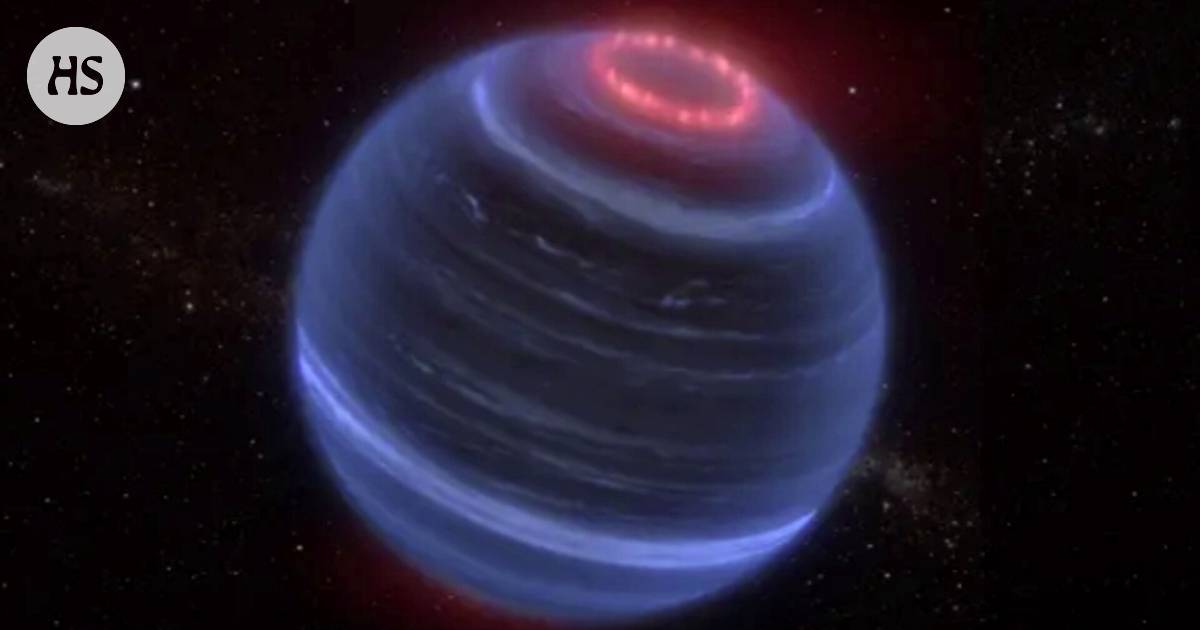Our solar system 6,000 outer planets, i.e. exoplanets, have already been found.
Instead, Eksokuu has been waiting to be found. So it is a moon that orbits a planet or other celestial body outside our own solar system.
One reason is that these moons orbiting distant planets are much smaller than the planets.
Moons are common in our solar system. Dozens of them have been named. Now it appears that the James Webb Space Telescope has indirectly discovered an exomoon.
The moon or moons would go round brown dwarfwhich is not a planet but a dark “failed star”.
A brown dwarf is a body larger than Jupiter that has not started a nuclear reaction. So it hasn’t become a star. The song has therefore remained dark.
WEbb had previously been tuned to study 12 known brown dwarfs. Interpreters of Webb’s images became interested in the dwarf, whose short catalog name is W1935.
Webb found last year from W1935 surprising infrared methane emission. This heat radiation produces the aurora borealis on this dark celestial body.
Methane suggests that its energy source is nearby. It could be a moon orbiting a brown dwarf or several exomoons. They would interact with a brown dwarf.
In the light of current knowledge, brown dwarfs themselves do not produce enough heat for their own methane to emit infrared light.
Brown the dwarf aurora borealis are similar to those in the polar regions of the Earth. The same phenomenon has also been seen at the poles of the large gas planets, i.e. Jupiter and Saturn.
Infrared modeling of the methane glow revealed that W1935 has a so-called “temperature inversion”, says website Space.com.
In it, the planet’s atmosphere warms from top to bottom, but this was not expected from W1935. That’s because no external heat source has been detected for the brown dwarf—unless it’s the moon.
W1935 is located 47 light years from Earth. It is bigger than Jupiter. The surface temperature is over 200 degrees Celsius.
“Methane gas does exist on giant planets and brown dwarfs. In general, however, we see them absorbing light, not glowing”, says Jackie Faherty From the Webb group.
He is the leader of one of Webb’s teams and the education manager at the American Museum of Natural History.
“We should figure out where that extra heat in the upper atmosphere is coming from,” says a member of the team Ben Burningham.
Answer the phenomenon can be found in the gas giants of our own solar system. Both Jupiter and Saturn have methane emissions. Both also have a gas ring where the temperature inversion takes place.
The auroras of Jupiter, Saturn and Earth are caused by the solar wind. It is a stream of charged particles from the Sun.
They collide with the magnetic fields of the planets. The particles interact with particles in the gas and atmospheres of the planets.
This warms the upper layers of the Earth’s atmosphere. It produces colorful light radiation near the planet’s poles. We call the phenomenon the northern lights.
However, W1935 is not close to its own parent star, its own sun. So where would its aurora borealis get its energy?
of Jupiter and Saturn’s aurora borealis is also generated by nearby moons. The moons of large planets spew material into space.
One of Jupiter’s active moons, Io, has hundreds of volcanoes on its surface. Their lava spreads into near space. One of Saturn’s moons, or Enceladus, in turn sends jets of water into space. These geysers contain water vapor and other material.
So the aurora borealis of W1935 may well be produced by a nearby, active moon. More evidence is still needed to confirm the exomoon for the first time.
He introduced a possible exomoon science journal Nature.
